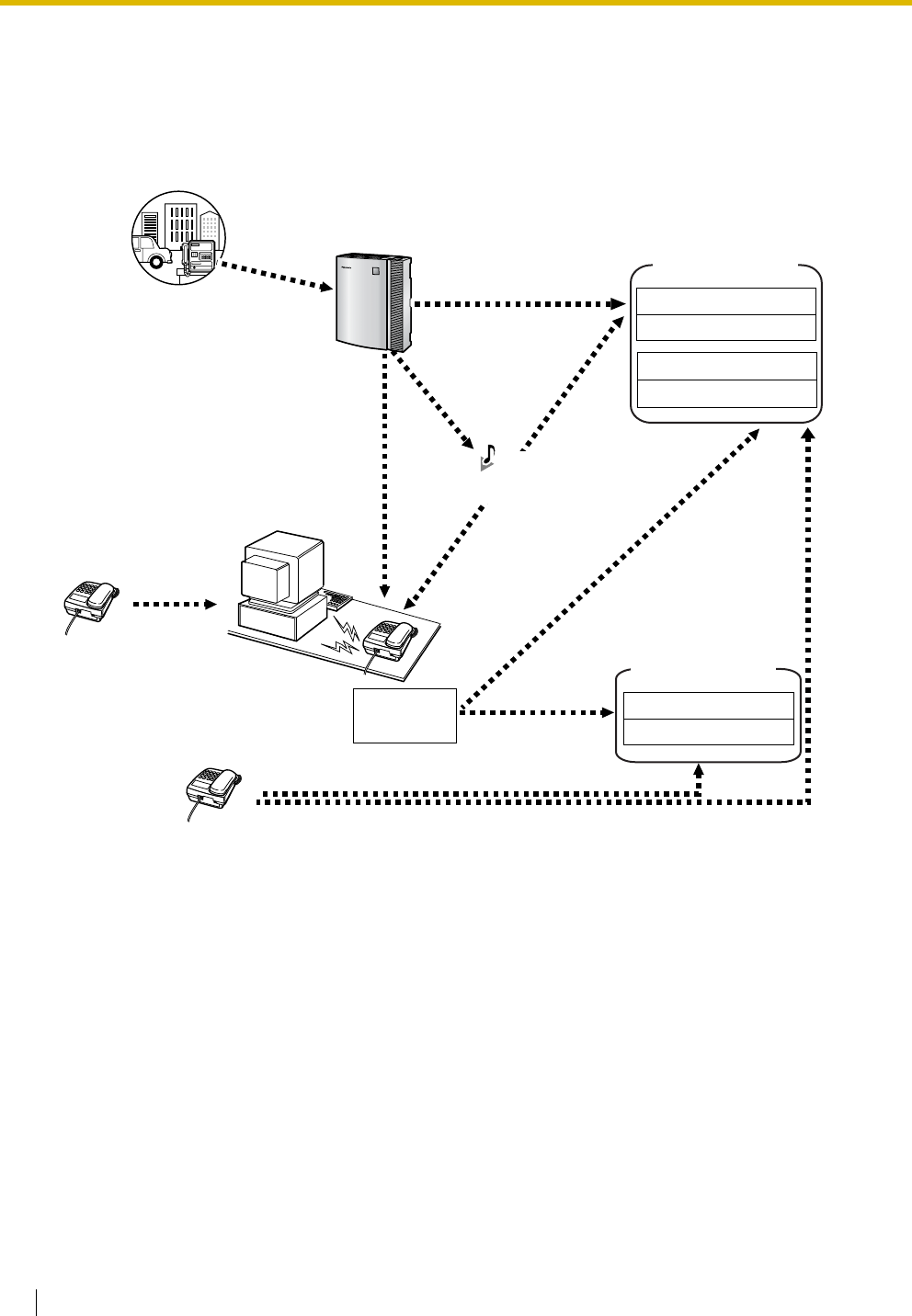
1.5 Before Leaving Your Desk
74 User Manual
1.5.5 Using Voice Messaging (Built-in Voice Message [BV])
– Recording, Playing, or Erasing Personal BV Outgoing Messages
– Forwarding Your Calls to Built-in Voice Message
– Leaving, Playing, or Erasing Voice Messages
If an optional voice message card is installed in the PBX, a caller can leave a voice message in one of the
voice message areas. There are 2 types of voice message area: personal message area and common
message area.
A personal message area is where callers can leave messages directly for you. When an incoming call (a
call direct to your extension, or a call using the Direct Inward System Access [DISA] Automated Attendant
[AA] service) is forwarded to your personal message area, the caller will hear a personal Built-in Voice
Message (BV) outgoing message (OGM) and can leave a voice message. You can access your personal
message area to play back or erase caller messages.
A common message area is where callers can leave messages for the company. When an outside (CO) line
call is automatically directed to the common message area, or when a DISA call is redirected to the common
message area via Intercept Routing, the caller will hear a common BV OGM and can leave a voice message.
Only the operator or manager can access the common message area to play back or erase caller
messages.
If there are new voice messages in your personal message area or the common message area (if
accessible), you will hear dial tone 4 when going off-hook. Additionally, if your telephone has a MESSAGE
Leaving
one’s desk
Call
Using the Direct Message feature
FWD to Personal
Message Area
Direct to extension
Using the DISA
AA service
Direct to Common
Message Area
Direct to DISA
Call
Outside party
Extension
Extension
Common BV OGM
Common Voice Message
DISA OGM
Personal BV OGM
Personal Voice Message
Operator/Manager
Personal BV OGM
Personal Voice Message
Others
FWD to Personal
Message Area
Intercept timer expires
•
Wrong number is dialled
•


















